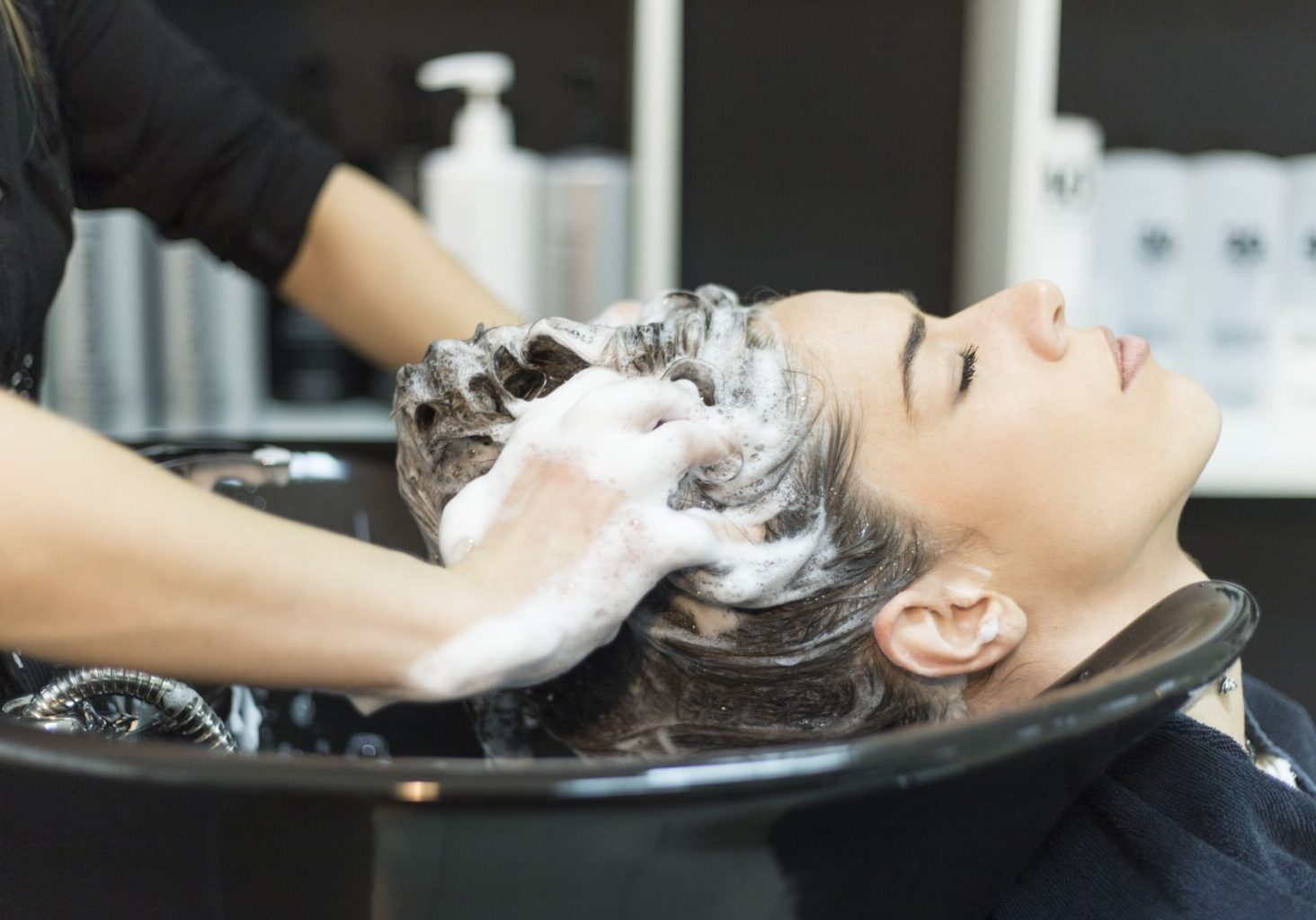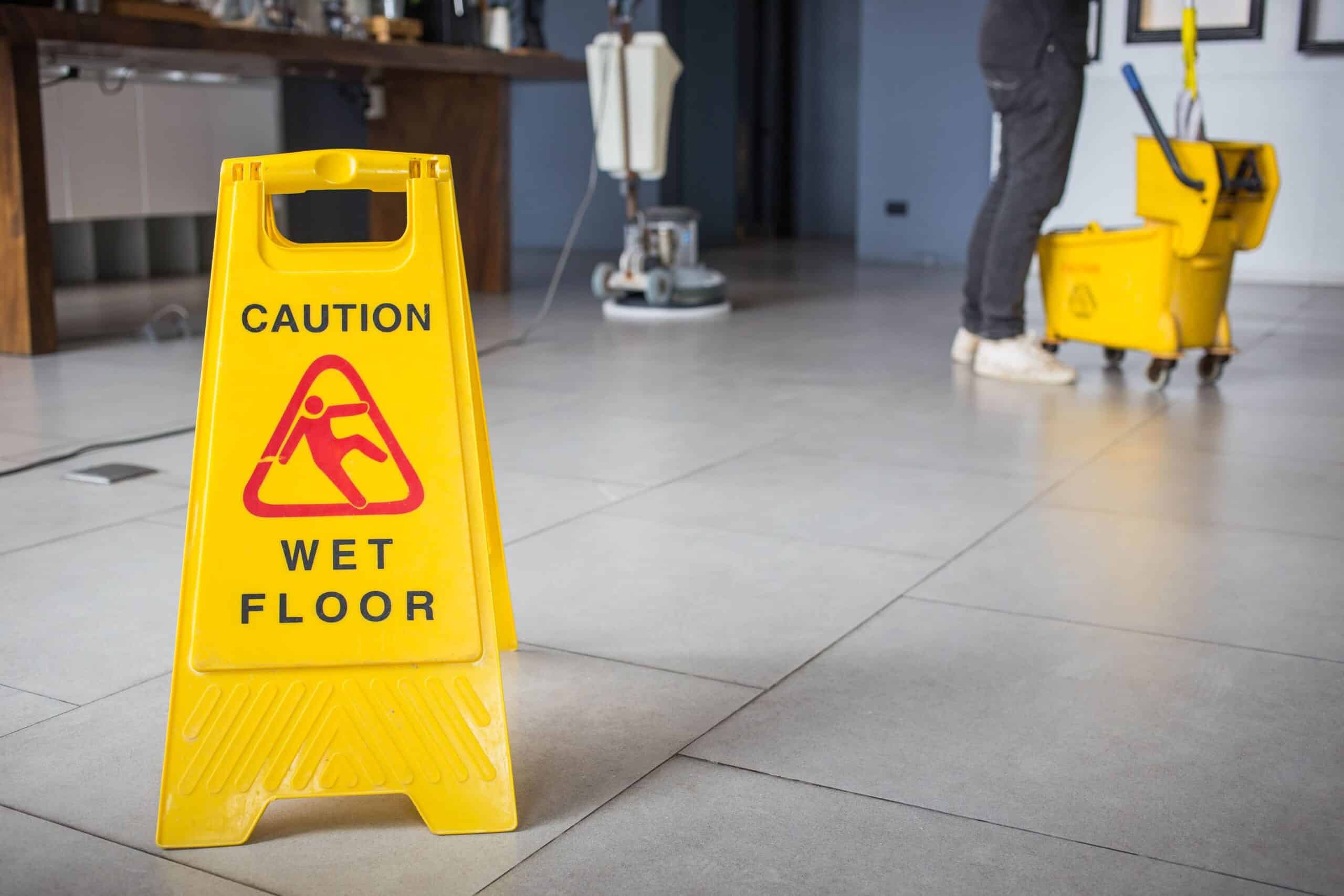Hair Salon Safety: How to Prevent Slips, Trips, and Falls
Last Updated: July 26, 2024

In 2011, a woman was walking around a hair salon when she reportedly crossed a slipping hazard. According to her allegation, she slipped on an oily substance. The woman fell and was transported to a nearby hospital, where she spent four days and underwent surgery to repair multiple leg and foot fractures.
The woman remained immobilized for nine months and then finished four months of physical therapy. The experience left her with a pinched nerve, a neuroma, lost wages, painful and limped walking, additional surgeries, and impaired mobility. She accused the salon owner of failing to maintain “reasonably safe conditions,” according to details in law.com’s verdict search. Then she sued the salon.
Was the salon owner liable for a hair salon safety violation? If you ask the witnesses, no. One witness at the salon saw the woman’s ankle buckle in platform shoes. Neither the woman nor any witnesses could detect the mysterious oily substance she claimed to slip on.
Given the lack of evidence, you might assume the jury let the salon owner off the hook. Unfortunately, that wasn’t the case. They found the hair salon owner 51 percent negligent, awarding the client $561,000.
What should hair stylists know about slip and fall hazards?
Here’s how they impact safety in a hair salon.
Falls, slips, and trips send more than 8 million Americans to the emergency room every year. About 20-30 percent of fall and slip accidents lead to injuries. Slip and fall hazards cause the most workplace accidents, including nearly 230,000 nonfatal cases in 2016. Sprains, fractures, breaks, traumatic brain injuries, lacerations, and neck and spinal cord injuries are all common from slip, trip, and fall accidents.
What are the main trip, slip, and fall hazards in a salon?
Hair salons are particularly susceptible, both for your clients and your stylist, barber, or hairdresser employees.
What exactly causes falls in your line of work? According to the Canadian Centre for Occupational Health and Safety (CCOHS) in their article and the UK’s Salon Magazine in theirs, some common tripping, slipping, and falling hazards in hair salons include:
- Wet, slick, or oily surfaces, like from sprayed or spilled products, recently mopped floors, dripping wet hair, and unswept hair trimmings.
- Loose objects, like anti-fatigue mats or uncoiled hair dryer cords catching on people’s shoes.
- Tight and cluttered spaces, like a small barber shop with lots of hair stylist chairs and workstations packed close together.
- Uneven walkways, which pose a hair salon safety concern in places with older floors.
- Open drawers.
- Dim lighting.
- Lack of handrails near stairs.
While negligence happens, industries like yours are rife with false allegations. In our earlier story, for example, a witness allegedly saw the woman’s ankle buckle in her tall shoes. Although she might’ve fallen on her own accord, the jury only found the salon’s client 49 percent negligent.
Siding with consumers is not uncommon in courts. This means salon owners like you bear most of the responsibility for preventing slips, trips, and falls (or at least reducing the risk). In doing so, you protect your clientele from injuries–and your business from expensive accusations.
Protect your business against false claims with hair salon safety.
No hairdresser or barber wants to pay the financial and reputational costs of a client injury in their salon. Wondering how to prevent slips, trips, and falls and protect your business against claims? Here are some tactics your fellow hair stylists recommend.
1. For health and safety purposes at your hairdressing salon, set routine protocol for maintaining safe conditions.
For seamless hair salon safety, routines are essential.
Make sure everyone understands your protocol for maintaining clean, dry floors. For example, employees should regularly look for slip, trip, and fall hazard control measures. This could include spilled water or products, or unswept debris like hair trimmings or trash, says Salon Magazine. Have a routine for changing light bulbs for optimal visibility, too.
You might offer routine training sessions once or twice a year to keep the information fresh. With your team, consider reviewing the Occupational Safety and Health Administration’s (OSHA’s) hair salon regulations, such as requirements for recording injuries. Additionally, practice responding quickly and calmly to emergencies. For example, you and your hairdresser team could run through basic first aid and when to call for an ambulance.
2. Clear high-traffic walkways.
For top-notch safety in a hair salon, keep clutter—like decorations, cords, boxes, open drawers, and clients’ belongings—out of high-traffic paths, like stairs, steps, and walkways, Salon Magazine recommends. Additionally, unplug and wrap cords when handheld equipment isn’t in use, and fasten any others you can.
3. Encourage non-slip surfaces.
Salon Magazine also encourages hair stylists and barbers to wear non-slip footwear. Although you can’t control what your clients wear, keep an eye on anyone wearing high-heel or platform shoes when they’re walking near stairs or egress points.
Meanwhile, as the salon owner, use high-traction tread on steps and stairs, highlight areas with changes in elevations, look for damaged surfaces with cracks or holes, and avoid rugs that don’t lie flat, advises OSHA.
4. Use safety signs.

The safest way to walk on wet floors is to slow down your stride with shortened steps, says Virginia’s Sheltering Arms Rehabilitation Centers in their blog article.
To point out slipping hazards and encourage hurrying customers and employees to slow down, put up warning signs near wet, icy, or other slick surfaces, SafetyCulture recommends. Recently mopped floors are a popular place for caution signs. For signage do’s and dont’s, read about OSHA’s hair salon regulations (and those for other workplace safety signs) here.
Lastly, safeguard your business with an insurance policy.
Slips, trips, and falls are some of the many kinds of accidents that befall hair salon customers. If an injured client can prove you were liable for the accident–and even if you aren’t completely at fault, like in our earlier story–you don’t want to face the conflict alone.
Try resolving a customer injury claim by yourself, and you could face $20,000 in fees, writes Forbes Editor Jason Metz. To a one-person barber team or small business owner, those fees could be detrimental.
Instead, utilize a team committed to the beauty community’s resolution and prevention of slip, trip, and fall claims. Whether a client suffers injuries or property damages on your salon’s premises, WellnessPro is the defense solution catered to your industry. Our general liability insurance policies connect you with our expert claims-handling team every step of your defense. We’ll detangle the messy, hairy conflicts outside your salon, so you can focus on the tangled knots you handle best (not to mention the split ends, of course).
Fill out our online application here for a free quote.
